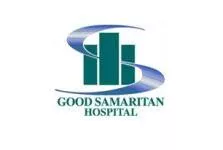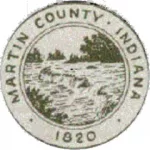
Governor Eric Holcomb signed an executive order on Monday, April 20th allowing hospitals to conduct clinically indicated procedures meant to diagnose, screen and treat medical conditions that have the potential for short-term or long-term morbidity and mortality, as long as sufficient personal protective equipment, staff and other supplies are available as to not detract from what is necessary and appropriate to care for and treat patients who have or may have COVID-19.
Good Samaritan President & CEO, Rob McLin, said because in areas like Knox County and southwest Indiana there has been a relatively low and stable incidence of COVID-19, it is important that the hospital shows flexibility in providing care for patients needing non-emergent, non-COVID-19 health care.
“There are people in our community who have ongoing health care needs that are currently being deferred. The last thing we want to happen is for our patients who need Good Samaritan to not seek care and let their underlying health deteriorate,” McLin commented. “We don’t want these patients to suffer when we are capable of getting them back to better health. Every person in our community and the region we serve should know they can, and should, feel comfortable and confident in seeking treatment not only in emergency situations, but also to diagnose serious conditions, address underlying chronic illness, relieve significant pain and much more. That is what we are here for.”
McLin stated that safety for patients and staff remains the top priority for Good Samaritan. The hospital will continue COVID-19 related processes such as maintaining a no visitor policy, screenings at entrances, careful usage of PPE
(personal protective equipment), utilizing an alternate care site for COVID-19 testing and dedicated units for COVID-19 hospitalized patients.
An additional measure being taken for those patients coming to the hospital for same-day surgical procedures is a new screening entrance. These patients will be directed to enter the hospital through the Same Day Surgery entrance. After completing the health assessment screening, the patient will be escorted to the Same Day Surgery floor for their procedure.
To start this slow reopening, McLin said schedules will be limited for the first week and then will be re-evaluated each week for potential increase of schedules or decreasing of schedules depending on supply utilization and presence of COVID-19 in the community.
“Our diagnostic imaging and testing services such as cardiac testing, MRI and lab will be limited to 50% of normal capacity to ensure social distancing is maintained throughout patient care,” he stated. “Our internal PPE team is working to ensure we have a reserve of stock PPE to meet any COVID-19 resurgence as the community starts to reopen in a phased approach. Along with PPE, we will maintain available bed capacity and staffing to address a surge potential.”
Additional guidelines and protocols that will continue at Good Samaritan include:
· Visitor restrictions will continue to be a no visitor policy. Exceptions include one visitor for: Outpatient surgery, inpatient surgery (before surgery only), patients without mental capacity to answer questions or make decisions, end-of-life discussions and visitations, pediatric patients, laboring mother, and behavioral health at discharge for treatment plan.
· Screenings at entrances for fever and other COVID-19 symptoms will be ongoing for outpatients entering the hospital.
· Patients with COVID-19 symptoms should continue to call the Good Samaritan nurse triage line at 812-885-3331 or visit the Respiratory Drive-Thru Triage Clinic at 1813 Willow Street in Vincennes.
· Video visits or telephone consults will be used for care whenever appropriate for patients to limit the need for patients to leave their homes.
· Increased cleaning and disinfection will continue in patient and public areas.
· Outpatients should come to appointments alone, unless the patient is a minor, has a disability or is mentally unable to communicate own needs. In cases when a driver is necessary for the patient, that driver should wait in their vehicle and will be notified by a phone call when the patient is ready to leave.
Information about the coronavirus and the hospital’s current restrictions can be found at gshvin.org/coronavirus.













